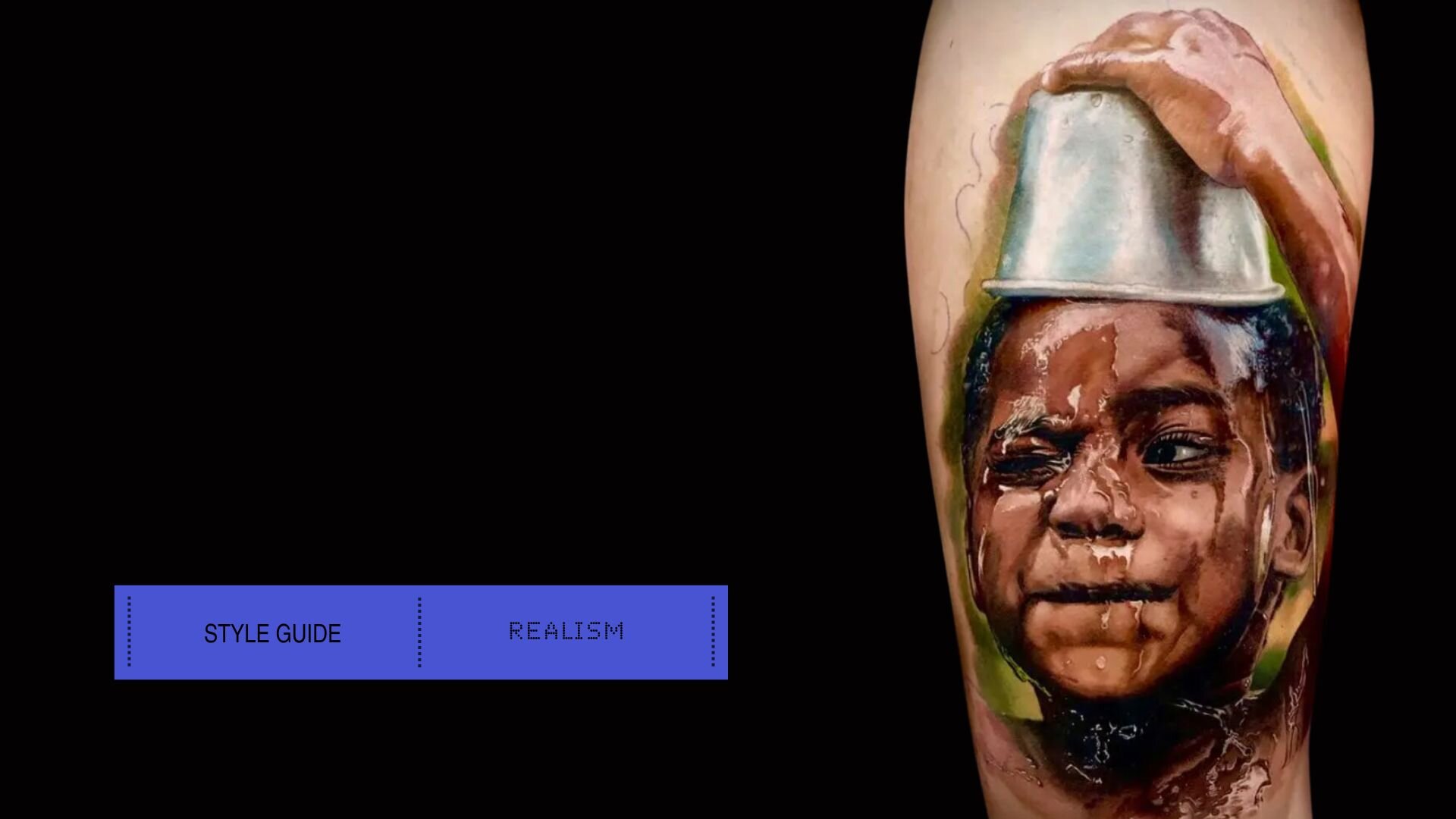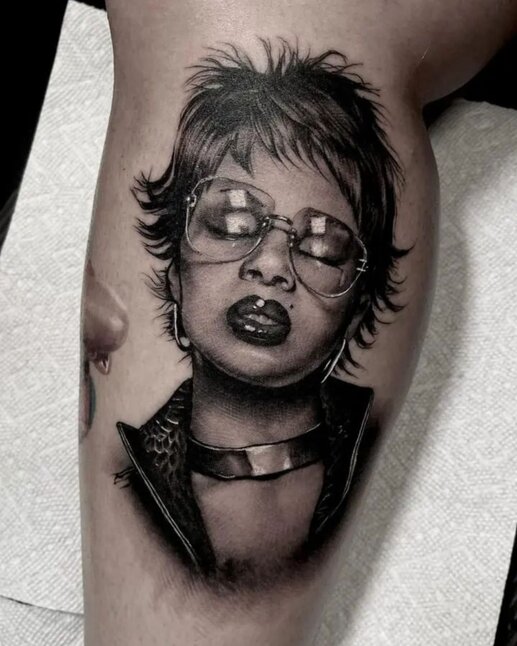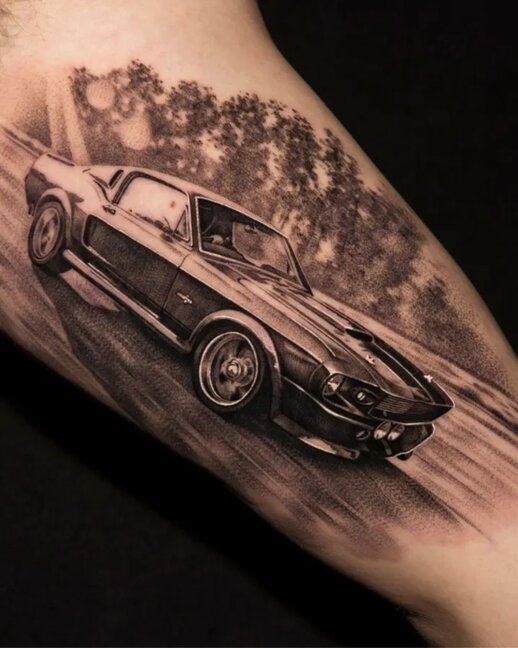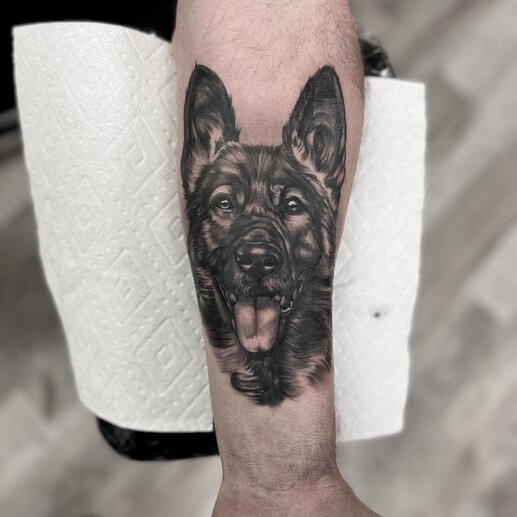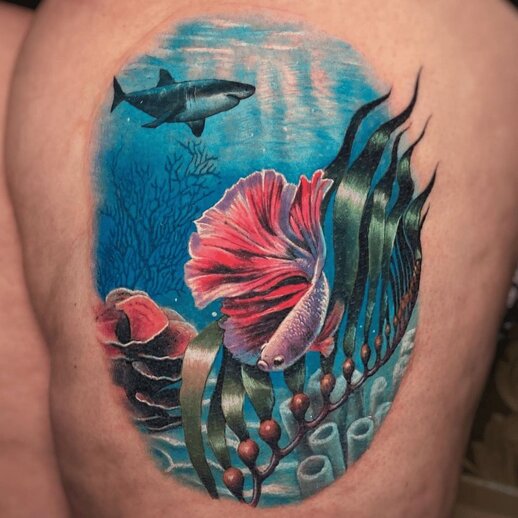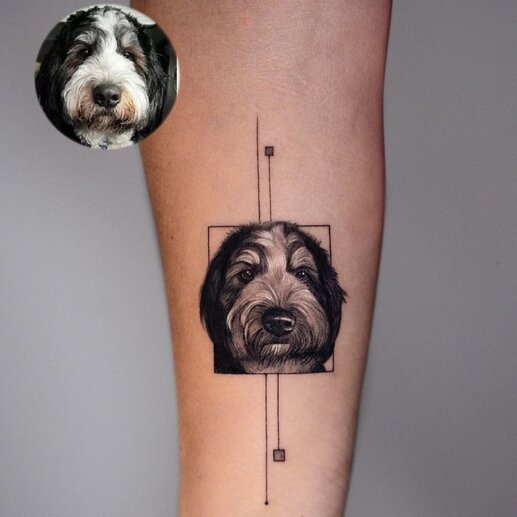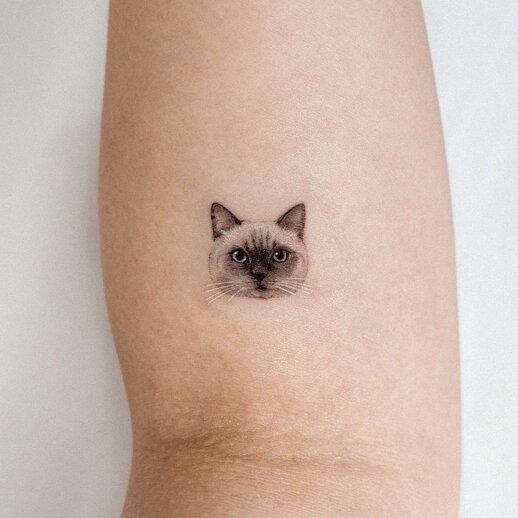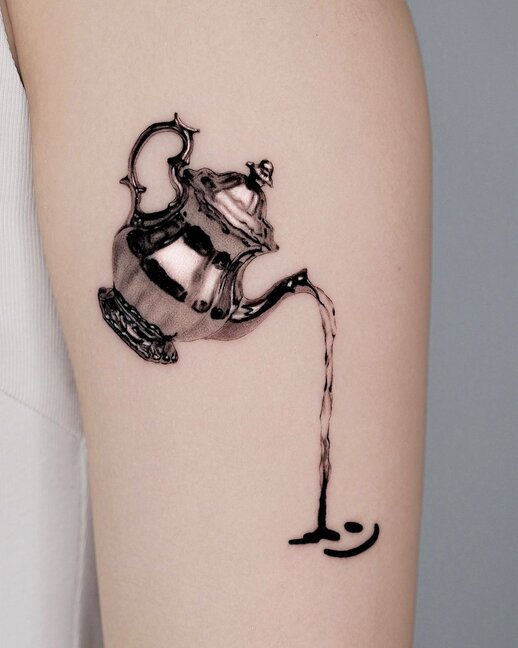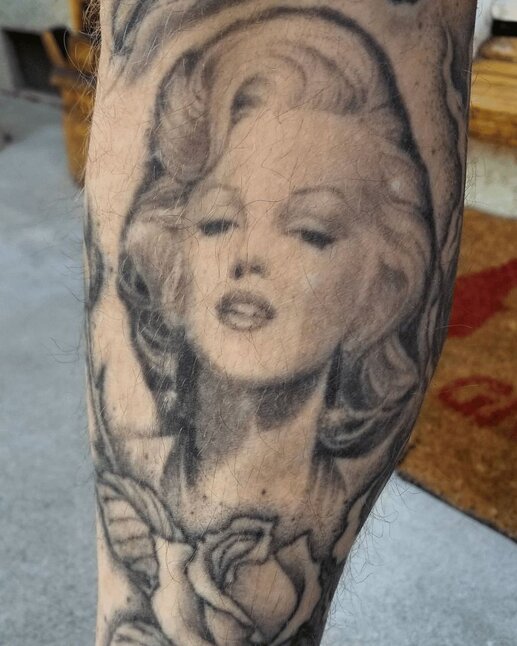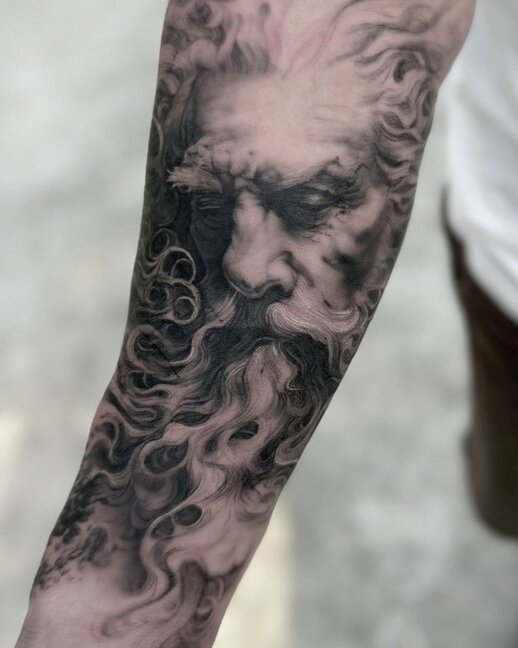Realistic tattoos are both easy to imagine and difficult to choose. There is, after all, a broad spectrum of possibility. Realism, a construct of Renaissance art and later advanced through the invention of the camera and embrace in Pop Art, is all about resemblance. More simply, realism strives for truthful likeness. In tattooing, the most common convention is photorealism — translating the subject of a photograph to skin. Alternates are hyper-realistic tattoos, which enhance three dimensionality, or micro-realistic tattoos, which (not surprisingly) are small but mighty replications of source material. Surreal tattoos, following the art of those like or inspired by Dali, balance realism with elements of surprise or subversion. Co-create artists Kat Tat, Kevin Laroy, Cleo Pétra, Dmitry Troshin, and Snuffy exemplify the different aesthetic options and compositional spectrums for realistic tattoos.
The CO:CREATE Method
Every tattoo style has a range of expressions. At CO:CREATE, we acknowledged that range, and are focused on three core considerations for describing the tattoo you want: aesthetic, iconography, and technique.
Aesthetic refers to how the tattoo looks. Line weight, color, saturation, movement with the body all contribute to look.
Iconography examines the meaning attached to the tattoo. We describe the cultural, historical, and spiritual connections chosen imagery carries and communicates.
Technique specifies the methods used to. For example, different techniques of shading (whip, dot, drag, etc.) create different levels of depth and dimension. Color layering, color packing, or distinct forms of linework, all contribute to refining the final form of your tattoo.
Discussing these three elements with your artist helps assure you get your dream tattoo.
Realistic Source Material
Photographic resources are typical starting points for realistic tattoos. These may include family pictures, art historical references, or other printed matter that present faithful likeness. Flora, fauna, portraits, and even architectural elements or sculptures provide the base for many realistic tattoos. Ultimately, the choice is yours: any photograph meaningful to you can become a realistic tattoo.
Realism Aesthetics
Realistic tattoos are equally powerful in color or black and gray. Both allow for a depth of shading and blending that bring the tattoo to life.
Realism Techniques
Given the requirement of truthful likeness, realistic tattoos, whether in color or black and gray, are successful when three-dimensionality is achieved through shadow. With color tattoos, this means a significant consideration of the correct color blending. Outlines need not be bold, in fact outlines are often only lightly applied as a way of shaping the final tattoo. In black and gray, the build of dark and light defines the depth of the tattoo and the ultimate faithfulness of the image. Given the need to build and blend, realistic tattoos are time consuming and require patience to reach the desired look.
Realism History
Realistic tattoos have advanced greatly over the last 50 years. The development of black and gray tattooing in the 1970s, rising from Southern California prison culture to a fully recognized genre of tattooing, delivered ever more precise portraiture. The celebration of family and friends, religious (Catholic) motifs, and Aztec stonework were the starting point, branching out to automobiles and Renaissance sculpture proved the potential of black and gray to absorb a wide range of realistic tattoo sources. Jack Rudy, the famed LA-based black and gray tattoo artist, would even reproduce the full look of a polaroid — photo-realism at its most meta. Over the ensuing decades the sophistication of color tattooing also advanced tremendously. Portraits of family members, celebrities, pop culture icons (i.e. Darth Vader) have become frequent subjects. The animal kingdom and natural world too. Classically trained artists transitioning to tattooing in the new millennium bring with them a sense of depth and shading that continues to push the boundary of realism and realistic tattooing.
The various types of realism tattoos can be explore with CO:CEATE artists including, Hugo Feist, Kevin Laroy, Cleo Pétra, Snuffy, Rich "Made Rich" Parker, Jozzy Camacho, Maria Alvarez, Aung Swe Oo, Nizzy Bop, Adriana Hallow, Samantha Mancino, MAKS, Armandean Munoz, Dmitry Troshin, Amalie Arsinevici, Dom Cali and many more.
